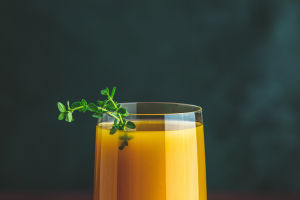Flowers have always captivated human beings with their innate beauty, acting as a subconscious pursuit of aesthetic appeal.
Among the various flowers that bring joy to our lives, grape hyacinths hold a special place.
The Grape hyacinth (scientifically called Muscari) possesses a unique elegance that sets them apart. These lovely flowers consist of clusters of around 20 small globular blooms arranged at the top of their stems.
Most often, these flowers hang down in dense clusters and come in shades of blue and white. The petals vary in hues, ranging from cyan, flesh, and light blue, to blue-violet.
People refer to them as grape hyacinths due to their resemblance to grapes and their inverted grape-like flowers.
Originating from central Europe, specifically France, Germany, and southern Poland, grape hyacinths thrive in warm and cool climates. They can tolerate shade while preferring ample sunlight.
These flowers thrive best in loose, fertile, well-drained sandy loam soil. Although grape hyacinths do not wither in winter, they are not particularly suitable for winter viewing.
They typically bloom from March to May, signaling the arrival of spring with their cheerful blossoms, creating a delightful sight to behold.
Grape hyacinths are characterized by their low clumps, reaching a height of 15-30cm. With their vibrant flower colors and early blooming period, they make an excellent choice for ground cover plants, particularly in forests and slopes.
They are widely used for landscaping purposes, such as ground covers under sparse forests, patches, strips, and edgings in flower borders and lawns.
They can also serve as accent clumps in rock gardens and can be grown in home flower pots or used as cut flowers.
These versatile flowers thrive even in shady slopes and areas with weak light. In gardens and courtyards, one can witness the delicate blue flowers of grape hyacinths swaying in the breeze, adding a touch of innocence and joy to the surroundings.
They can be planted densely or combined softly with other bulbous flowers like tulips and white lilies, creating a natural and enchanting landscape.
Interestingly, while grape hyacinths share similarities with traditional hyacinths in terms of being perennial bulbous flowers, they are, in fact, different species with distinct characteristics and ornamental value.
Unlike grape hyacinths, hyacinths boast larger and more fragrant flowers, resembling bell-shaped clusters. Hyacinths tend to degenerate quickly after planting, making it challenging to maintain their original state.
On the other hand, grape hyacinths may have smaller blooms, but they grow rapidly, bloom every other year, and exhibit better repeat flowering.
One of the most captivating aspects of grape hyacinths is their pure blue color. The smoky blue flowers of grape hyacinths have a mesmerizing effect on many individuals, enhancing their allure and creating a unique charm.
Grape hyacinths are exquisite flowers that possess a distinct beauty. Whether planted in gardens, courtyards, or used as ground covers, these flowers have the power to uplift our spirits and fill our surroundings with innocent joy.


